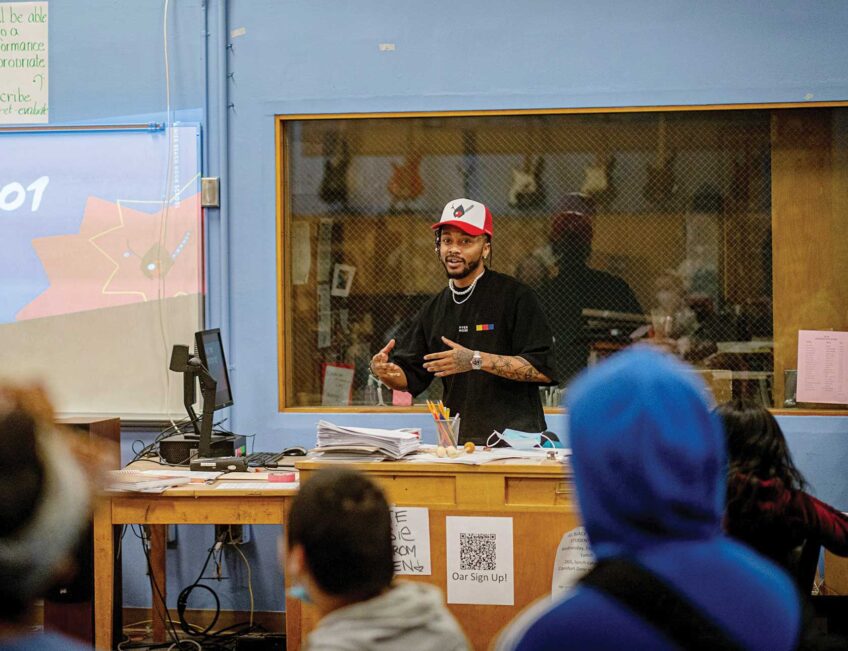NAACP-LDF files suit against U.S. Department of Education
Legal showdown on race in America imminent
Last week, the NAACP Legal Defense Fund sued the United States Department of Education. The plaintiffs’ litigation legacy needs no introduction. Rushing to defend diversity, equity and inclusion (DEI) programming, the NAACP’s lawyers may find themselves on rocky rhetorical terrain: Convincing a federal judge that the nation’s foundation is fundamentally flawed.
The LDF argues that school districts nationwide face a dire dilemma. At risk of losing all federal funding, state and local education agencies must certify that advantaging one race over another, including by DEI, is a violation of Title VI of the Civil Rights Act of 1964. Responses are due April 24.
Some school districts are betting it’s a bluff.
The department’s formal guidance, the suit argues, is “so vague that recipients cannot determine what activities are affected and thus do not know how to conform their activities.” As a result, the documents “deter lawful activities by forcing institutions and their students to steer clear of almost anything involving race.”
A letter sent to colleges specifies the broad scope: None may “use race in decisions pertaining to admissions, hiring, promotion, compensation, financial aid, scholarships, prizes, administrative support, discipline, housing, graduation ceremonies and all other aspects of student, academic, and campus life.”
At stake is the “equal access to a quality public education” that the U.S. Supreme Court secured in 1954 through Brown v. Board of Education, the suit contends.
In 2023, the nation’s top court held that race-conscious admissions policies at Harvard and the University of North Carolina “violate the Equal Protection Clause of the Fourteenth Amendment” when deciding Students For Fair Admissions, Inc. v. President and Fellows of Harvard College. The reasoning has been extended to K-12 education.
Chief Justice Roberts authored the majority opinion. He wrote, “at first, this court embraced the transcendent aims of the Equal Protection Clause” in the Constitution’s 14th Amendment. The 14th Amendment was one of three changes to the Constitution between 1865 and 1870. That period after the Civil War is known as America’s second founding.
Then, “this Court — alongside the country — quickly failed to live up to the Clause’s core commitments,” he wrote.
Equality under law advanced haphazardly through Reconstruction, Jim Crow, the Great Depression, two world wars and civil rights. It remains contested.
For decades, separate but equal treatment of races was deemed legal. “But the inherent folly of that approach of trying to derive equality from inequality soon became apparent,” Roberts wrote.
Overturned in the Brown decision, the new doctrine held “the right to a public education must be made available to all on equal terms,” he continued. Afterwards, the Court “began routinely affirming lower court decisions that invalidated all manner of race-based state action.”
“Any exception to the Constitution’s demand for equal protection must survive a daunting two-step examination known in our cases as ‘strict scrutiny,’” the Court said. Race in public policy must further a compelling government interest and be necessary for achieving it.
A 2003 case, Grutter v. Bollinger, “imposed one final limit,” he wrote: All race-conscious admission programs must have a termination point. The end was expected 25 years later.
Harvard’s policy “doesn’t have a date on it,” argued an attorney for the university at Cambridge in 2022.
Along with jurisprudence, U.S. demographics have evolved. The multiracial population increased from 0.073% of America in 1950 to 2.4% in 2000. In the 2020 census, America was 3.1% multiracial.
Racial animus mellows in the melting pot, however, deliberately.
In the 2025 suit, each party has planted its flag on opposite sides of whether “the United States is built upon ‘systemic and structural racism.’” The Trump administration’s letter called the proposition a “false premise.” The NAACP rejects that claim. The suit alleges “incontrovertible evidence of racial oppression and white supremacy in the United States.”
Arguing that point, the lawsuit draws a throughline from slavery to achievement gaps. The pattern of disadvantage, therefore, demands corrective policy.
For present-day racial disadvantages, the lawsuit cites chronic underfunding of school districts, an abundance of novice teachers, majority-minority school enrollment, pedagogical disparities and disproportionate discipline.
For relief, the lawsuit seeks declarations that the Department of Education’s communications are unconstitutional, unlawful, arbitrary and capricious. The plaintiffs ask the court to enjoin the enforcement of the administration’s legal interpretation.
Those documents, said NAACP President and CEO Derrick Johnson, are “a gross distortion of reality that attempt to erase the lived experiences of millions of Black and brown children in America.”
“The Office of Civil Rights has baselessly characterized vital efforts to advance racial equality to themselves to be racially discriminatory,” said LDF Senior Counsel Michaele N. Turnage Young, “thus weaponizing the anti-discrimination laws against the very communities they are meant to protect.”
For Katarina Feldkamp, LDF assistant counsel, “these threats seek to undo decades of progress towards equality for all in public education.”






